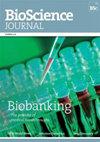Evaluating the responses of some wheat landraces and cultivars cultivated locally in Saudi Arabia to three sources of irrigation water
IF 0.6
4区 农林科学
Q3 AGRICULTURE, MULTIDISCIPLINARY
引用次数: 0
Abstract
This study was aimed to investigate the response of some wheat (Triticum aestivum L.) landraces to three irrigation sources, freshwater (FW), well water (WW), and treated municipal wastewater (TMW), regarding the impact on growth, yield, and grains elements contents. The results showed that the various wheat landraces irrigated with treated wastewater were significantly taller (117.3 cm) with multi tillers (22 tiller plant-1), had maximum spikes per plant (2.6), and longer weighty spikes (14.5 cm & 12.1 g). Landraces L1(Burr), L2 (Baldy Burr), C7 (Yecora Rojo), had maximum tillers, L4 (Alssamaa Burr), L5 (Bahaal Burr), L7 (Yecora Rojo) had more spikes per plant and the longer weighty spikes were recorded in L5 Baldy Burr, L1(Burr), heavy spikes were reported in L5 (Bahaal Burr) and L1(Burr). Moreover, these landraces had the highest yield per plant and 1000 grains weight (49.8 g, 12.5 g) respectively. The N, P, K, and Mg contents were increased under TMW, and their levels in landraces and cultivars in order are 3>L2>L4>L5>L1>C6>C7. Even Cu, Fe, Mn, Zn levels were higher in various landraces irrigated with TMW, however, L3, L2, and L4 had maximum contents of all microelements. TMW irrigation enhanced growth, yield, and grain quality in terms of essential elements. The irrigation of landraces L1, L4, L5 with TMW may be a feasible alternative for sustainable wheat production and safe water in arid regions such as Saudi Arabia.评估沙特阿拉伯当地种植的一些小麦地方品种和品种对三种灌溉水源的响应
本研究旨在调查一些小麦(Triticum aestivum L.)地方品种对淡水(FW)、井水(WW)和处理过的城市污水(TMW)三种灌溉源的响应,以及对生长、产量和谷物元素含量的影响。结果表明,用处理过的废水灌溉的各种小麦地方品种显著较高(117.3cm),多分蘖(22分蘖株-1),单株穗数最大(2.6),穗重较长(14.5cm和12.1g)。L1(Burr)、L2(Baldy-Burr)、C7(Yecora-Rojo)等地方品种分蘖最大,L4(Alssamaa-Burr),L5(Bahal-Burr。此外,这些地方品种的单株产量和1000粒重最高,分别为49.8克和12.5克。TMW处理使N、P、K和Mg含量增加,其在地方品种和品种中的含量依次为3>L2>L4>L5>L1>C6>C7。TMW灌溉的各小种Cu、Fe、Mn、Zn含量均较高,但L3、L2和L4的微量元素含量最高。TMW灌溉在基本元素方面提高了生长、产量和粮食质量。在沙特阿拉伯等干旱地区,用TMW灌溉L1、L4、L5地块可能是可持续小麦生产和安全用水的可行替代方案。
本文章由计算机程序翻译,如有差异,请以英文原文为准。
求助全文
约1分钟内获得全文
求助全文
来源期刊

Bioscience Journal
Agricultural and Biological Sciences-General Agricultural and Biological Sciences
CiteScore
1.00
自引率
0.00%
发文量
90
审稿时长
48 weeks
期刊介绍:
The Bioscience Journal is an interdisciplinary electronic journal that publishes scientific articles in the areas of Agricultural Sciences, Biological Sciences and Health Sciences. Its mission is to disseminate new knowledge while contributing to the development of science in the country and in the world. The journal is published in a continuous flow, in English. The opinions and concepts expressed in the published articles are the sole responsibility of their authors.
 求助内容:
求助内容: 应助结果提醒方式:
应助结果提醒方式:


